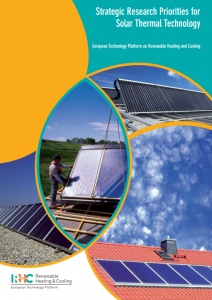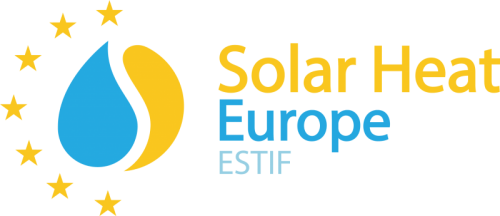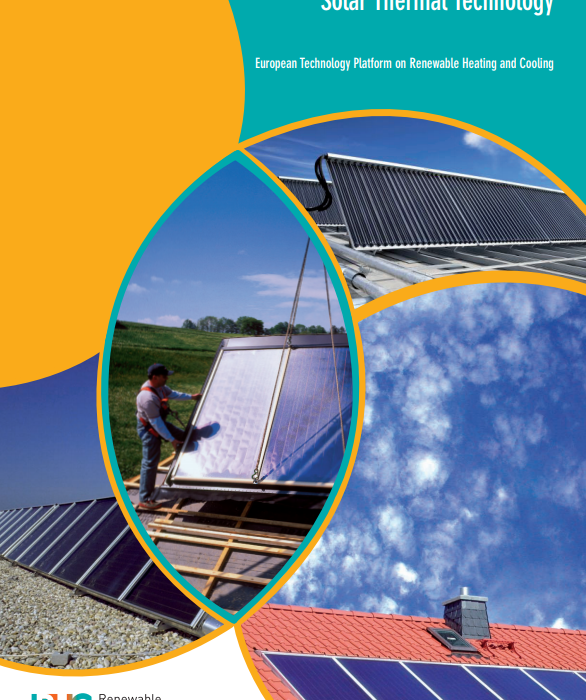 Europe’s energy future is dependent on our ability to address today tomorrow’s energy challenges. These challenges must be looked at from different angles: the stability and predictability of energy costs; environmental and climatic impact of our energy production and consumption; security of supply and geostrategic political matters related to the control of the energy supply; the capacity to generate local investment and local jobs; and maintaining a technological edge. This will allow Europe to be competitive at global level in the multi-trillion renewable energy market. Today there is still a tendency to equate energy with electricity, even when it only represents less than 25 percent of the final energy consumption in Europe. Or, to regard energy production only as a centralised large scale activity, while energy is mostly consumed at a local level and on a small scale. These fallacies are also reflected in Renewable Heating and Cooling (RHC) European and national policies and action plans.
Europe’s energy future is dependent on our ability to address today tomorrow’s energy challenges. These challenges must be looked at from different angles: the stability and predictability of energy costs; environmental and climatic impact of our energy production and consumption; security of supply and geostrategic political matters related to the control of the energy supply; the capacity to generate local investment and local jobs; and maintaining a technological edge. This will allow Europe to be competitive at global level in the multi-trillion renewable energy market. Today there is still a tendency to equate energy with electricity, even when it only represents less than 25 percent of the final energy consumption in Europe. Or, to regard energy production only as a centralised large scale activity, while energy is mostly consumed at a local level and on a small scale. These fallacies are also reflected in Renewable Heating and Cooling (RHC) European and national policies and action plans.
Renewable Heating and Cooling is the energy sector sleeping giant which for a long time has been misperceived and underestimated. This was acknowledged in 2011 by the European Renewable Energy Council (EREC) in its “RE-thinking 2050” publication: “As a sector, heating and cooling remains the largest contributor to the final energy demand in 2050. The renewable heating and cooling market, comprising residential and industrial biomass as well as solar thermal and geothermal applications, is predicted to take off fast. Together, they represent approximately 21% and 45% of the total final energy consumption in 2030 and 2050 respectively.”
According to the Common Vision for the Renewable Heating & Cooling sector in Europe, published in 2011 by the Renewable Heating and Cooling European Technology Platform (RHC-Platform), the potential of these technologies is vast: “in 2020 over 25% of heat consumed in the European Union could be generated with renewable energy technologies” and “by 2030 renewable heating and cooling technologies could supply over half the heat used in Europe”.
Solar thermal energy, together with biomass and geothermal energy, is a major source of heating and cooling in Europe. It is an extremely convenient source of heating, based on a simple concept enhanced by cutting edge technology. Thanks to technological progress solar thermal has become not only a better option for more traditional applications, such as domestic hot water production, but also an attractive alternative for new and more advanced applications such as industrial process heat.
This document describes the potential of solar thermal technologies and the most important R&D priorities that can facilitate the large deployment of solar thermal in multiple market segments.
To promote such deployment, a multi-approach strategy is needed, requiring:
- a considerable increase in the number of annually installed solar thermal systems;
- an increased solar fraction of systems per building;
- a systematic development of market segments with low solar thermal penetration, and;
- a strong support for solar thermal applications in the R&D and pilot phase by increasing both the R&D effort and the number of pilot plants.
This can be attained by means of technological achievements that:
- significantly reduce the costs of solar thermal energy for different applications and for high solar fractions;
- ensure a high system performance and reliability of solar thermal systems, e.g. by system design improvements;
- allow solar thermal to play a more important role in medium temperature applications;
- boost the combination of solar thermal systems with other technologies into hybrid systems, and;
- improve the production technology for solar thermal components and systems.
The potential, challenges and objectives, as well as the respective R&D priorities to achieve these objectives are detailed in chapter 3. Research and development needs are divided into different R&D focus areas; structured as follows:
Applications
- Solar domestic hot water and space heating systems
- Non-residential solar heating applications
- Solar cooling systems
Components
- Solar thermal collectors
- Thermal storage
- System control and performance assessment
Non-technological topics
- Standards and measures for quality assurance
- Other non-technological priorities and supporting measures
The analysis of each of these focus areas includes an overview of the state-of-the-art, the challenges, development objectives, the main R&D challenges and R&D priorities.

